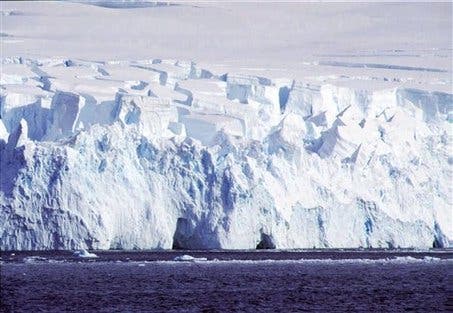
There isn’t any news for anyone, I hope, that the Earth is on the heater right now, and as time passes and gas emissions in the atmosphere rise, you should be thinking about ordering that air conditioning faster. Yes, glaciers are melting, and like I mentioned before scientists have projected an increase in sea levels of around 1.6 meters by 2100, but this margin could easily be increased if one takes in account the effects that warm waters beneath the ice have, a new study points out.
“Ocean warming is very important compared to atmospheric warming, because water has a much larger heat capacity than air,” study researcher Jianjun Yin, of the University of Arizona, said in a statement. “If you put an ice cube in a warm room, it will melt in several hours. But if you put an ice cube in a cup of warm water, it will disappear in just minutes.”
Little attention has been paid to the impact of warmer water beneath the ice, but now Jianjun Yin of the University of Arizona and colleagues report the warming water could mean polar ice melting faster than had been expected. The researchers studied 19 climate models and saw that subsurface ocean warming could accelerate ice-sheet melting over the next century, resulting in greater sea level rise that could exceed 3 feet (1 meter).
It’s not about melting ice going straight into the water only, if floating ice along the coastal areas melts it will allow the flow of glaciers to accelerate, bringing more ice into the seas. This means progressive damage, like a snowball effect.
“This mean that both Greenland and Antarctica are probably going to melt faster than the scientific community previously thought,” co-author Jonathan T. Overpeck said in a statement.
Overpeck, co-director of the University of Arizona’s Institute of the Environment, said: “This paper adds to the evidence that we could have sea level rise by the end of this century of around 1 meter and a good deal more in succeeding centuries.”
Oddly enough, glaciers in Greenland will melt at a faster pace than those in Antarctica apparently. This, scientists explain, occurs because of the differences in warm and cold currents. Given a mid-level increase in greenhouse gases, the subsurface layer of the oceans (500 meters deep), would heat up to 1.8 degrees Fahrenheit (1 degree Celsius) by 2100. Temperatures along the Greenland coast, however, could increase as much as 3.6 F (2 C) by 2100, but along Antarctica would warm to only 0.9 F (0.5 C).
“No one has noticed this discrepancy before — that the subsurface oceans surrounding Greenland and Antarctica warm very differently,” Yin said. The discrepancy is caused by different currents in the ocean: The Gulf Stream will send warmer waters toward Greenland, while the Antarctic Circumpolar Current blocks some of the warmer waters from reaching Antarctica.
Overpeck and Yin’s study adds even more evidence supporting the fact that global warming is dreadfully real and that sea levels could rise at a vertiginous rate in the next century. Their report was published Sunday in the journal Nature Geoscience.






